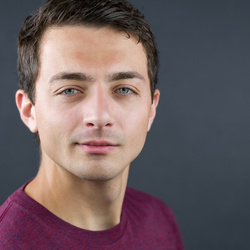Photography captures moments, but it can do more than that. It can tell stories, convey emotions, and draw viewers into a scene, making them feel as if they’re part of it. This is why understanding how to approach photography not just as a snapshot but as a crafted narrative is crucial. It can elevate your work, turning a simple image into something memorable.
Coming to you from Sam Bugas, this engaging video explores the concept of approaching photography with a director's mindset. Bugas emphasizes that by thinking like a director, you’re not just capturing a scene but creating one. Instead of passively snapping a moment, you actively decide how each element in the frame contributes to the overall story. This approach involves considering everything from the direction a person walks in a scene to the lighting and composition, making your photos not just visually appealing but narratively compelling.
Bugas shares how this mindset allows you to inject creativity and intention into your work. For example, he discusses how introducing elements like people or specific lighting conditions can dramatically change the narrative of a photograph. Even in a simple landscape, by adjusting your perspective or manipulating exposure, you can convey feelings of isolation, wonder, or even fear. This isn’t just about taking a technically good photo; it’s about creating an image that speaks to the viewer, drawing them in and holding their attention.
The video also discusses the importance of narrative even in seemingly straightforward scenes. Bugas walks through several examples where he transformed simple landscapes into compelling stories. By carefully choosing what to include or exclude in the frame, and by thinking about how each element interacts with the others, he demonstrates how you can craft a narrative that resonates with viewers. Bugas argues that in an era dominated by AI and digital manipulation, the ability to tell a story through your images is what sets you apart. While AI can generate technically flawless images, it lacks the ability to infuse them with the personal touch and narrative depth that human photographers can achieve. This makes the directorial approach not just a creative choice but a necessary one if you want your work to stand out and remain relevant. Check out the video above for the full rundown from Bugas.







It would be interesting for those landscape photographers adopting the "storyteller" approach to ask their audience what the actual story is that they think is being communicated by their photo. After all, it's one thing to feel like you're expressing something, but it's totally another for your audience to get the message. It's somewhat like abstract art and conceptual art in general... an intended interpretation may circulate through the mind of the artist, but nobody else understands the meaning without an artist statement.
The issue I have with landscape photo storytellers is that a photograph is one precise moment in time. Of course there are emotions conveyed, but it's still just 1/250th of a second or so extracted out of the life of the photographer. Saying that that moment in time tells a story is like saying that one note out of a musical score is a song. At best, a street or documentary photographer might build on the human element for creating a more emotionally compelling photograph, but the equivalent of a crime novel, it is not. If you want to tell stories, write a book. If you want to show your vision of something in the world around you, make a picture.
And to that extent, I feel like the beauty of the landscape is quite enough on its own to serve as the basis for a good picture. For me, including a person in a nature or landscape photo becomes a distraction from the main subject of the photo. Perfect for a travel magazine or family vacation memories; not so much for photographic art.